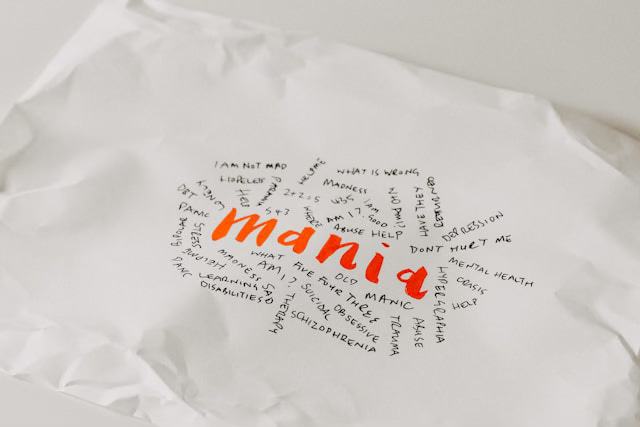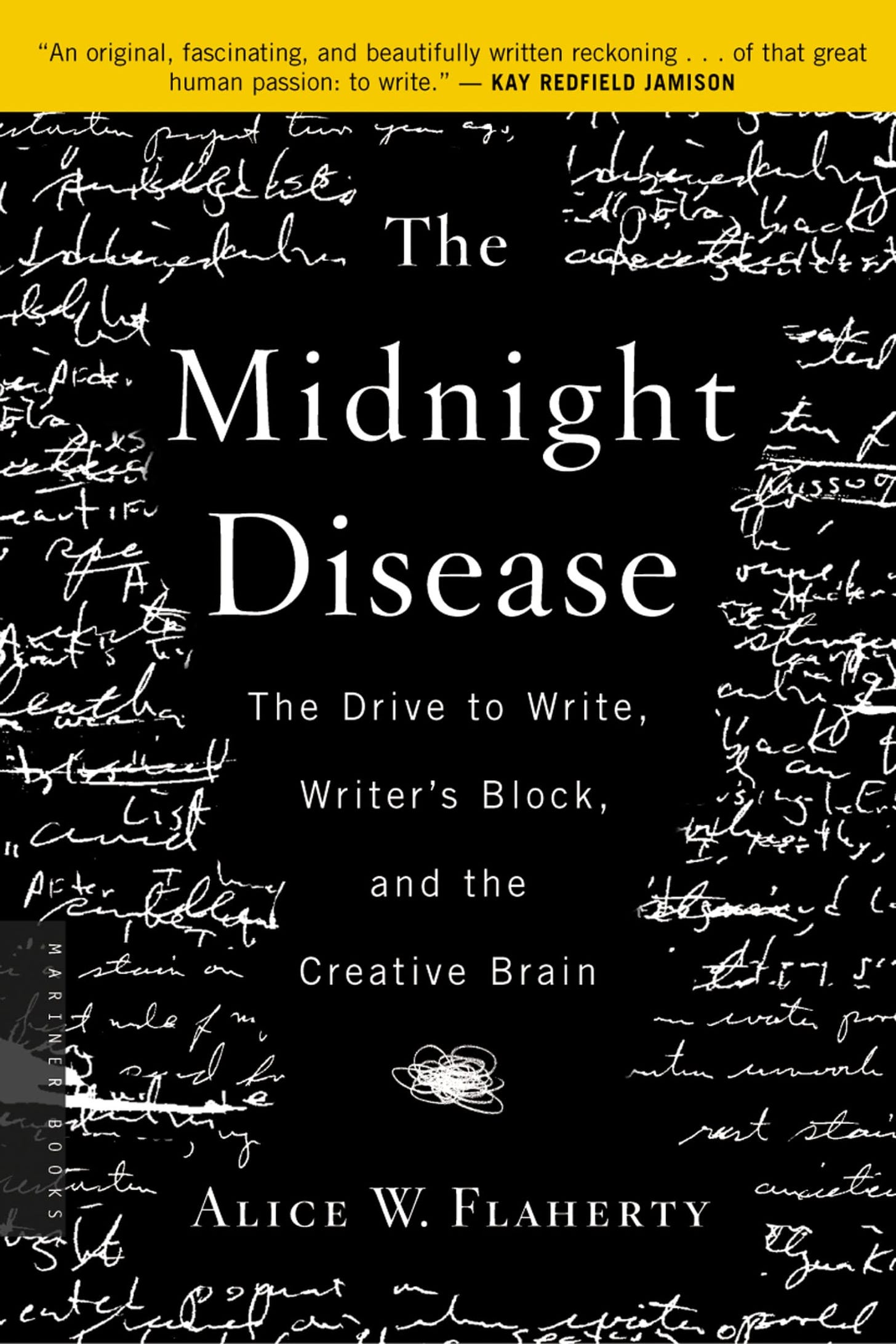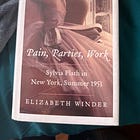Handwriting, Hypergraphia, Hypographia, Creativity, and Mental Health
Exploring the impact of bipolar depression and mania on the physical act of writing
In exploring the work by and about Sylvia Plath, I’ve found myself entranced by the references to an inability to write. We all know about writer’s block, the mental inability to write, and that’s part of this. But also this manifests for Plath and her fictional characters as physical - a change in the actual handwriting and then a seemingly physical inability to write (or even read.)
Plath is widely believed to have experienced bipolar disorder; the inability to write was directly related to her depressive periods. On the other hand, during periods of hypomania or mania, she was believed to experience hypergraphia, which is an intense and often uncontrollable desire to write. I’m fascinated by this. I’m just beginning to dig into the impact of bipolar disorder on the physical ability / compulsion to write, but I wanted to share with you what I’ve discovered and thought about thus far.
“Many a writer knows the pain and frustration of writer's block. The looming presence of the blank page, the gripping fear of creative sterility are only too familiar to journalists, poets, diarists or avid pen pals. Few of us, however, have experienced block's bizarre counterpart: hypergraphia. Imagine living with the compulsive need to scrawl away constantly, scribbling on notebooks, napkins, walls, even skin.” - Chantal Martineau
Defining Some Terms: Hypergraphia/ Hypographia/ Dysgraphia
Hypergraphia is an official term and a medical diagnosis. Hypographia is a term I made up to describe the opposite. When I researched “the opposite of hypergraphia,” I came up with agraphia, writing impairment, and writer’s block. We’ll also cover dysgraphia, which is physical difficulty with writing.
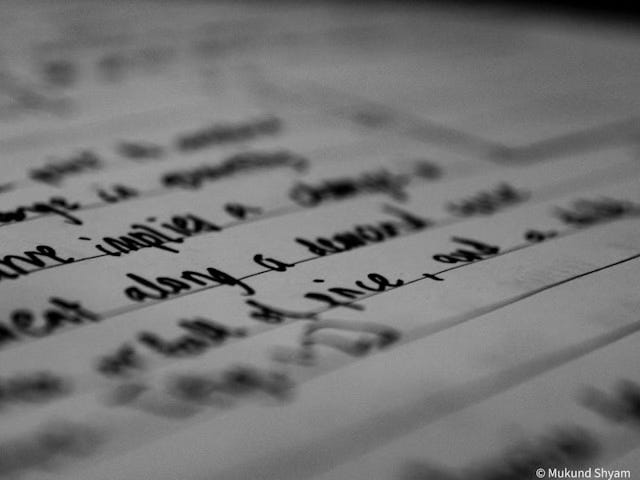
Hypergraphia is …
characterized by an excessive and compulsive urge to write or draw. It goes beyond a normal desire to engage in written expression and becomes an intense, insatiable need to put thoughts and ideas onto paper or other surfaces including walls.
As a result, people produce copious amounts of writing, usually compulsively, sometimes writing or drawing for such an extended period of time that they physically hurt themselves doing so. Heightened emotional states and intrusive thoughts can be two reasons that people are compelled to channel their experience into compulsive writing.
Notably, hypergraphia is most commonly associated with temporal lobe epilepsy. It’s not widely thought of as a symptom of a mental health condition. That said, it’s increasingly been linked with bipolar mania. There’s still a lot that we don’t understand about the relationship between psychology and neurology; there may be a link to the temporal lobe in bipolar. There may be overlapping neural mechanisms contributing to hypergraphia and mood disorders. The limbic system, which is involved in emotion processing and regulation, is implicated in both hypergraphia and bipolar. Bipolar itself may also change brain structure. So, we know that there’s a potential relationship, although what that is isn’t yet clear.
Hypergraphia has sometimes been reported as a symptom of other conditions including OCD (related to its compulsiveness) and schizophrenia, but I’ll explore that further down the line, focusing on bipolar here in this essay.
Hypographia is …
As aforementioned, this is not a real term. However, it’s the obvious term for the opposite of hypergraphia, and a quick Google search shows that I’m not the first to apply it.
When I tried to find the actual term for the opposite of hypergraphia, I came up with agraphia. This certainly works as well. It’s a term for a neurological condition which impairs the ability to write. Since hypergraphia is also typically considered a neurological condition, it applies well. Nevertheless, I’m personally more comfortable with hypographia. I think this is because I’m used to the hyper/hypo distinction in psychology in general … for example, hyperarousal and hypoarousal as it relates to the window of tolerance.
So, for our purposes, we’ll consider hypographia to be the opposite of hypergraphia and therefore means the inability to write or draw, to put thoughts on a page, and perhaps even a repulsion at doing so.
Dysgraphia is …
Finally, we have dysgraphia, which is impaired handwriting. Whereas hypographia is a mental inability to write, or writer’s block, dysgraphia reflects physical changes to the handwriting itself, as we saw mentioned in The Bell Jar and The Last Confessions of Sylvia P. Sometimes people with dyslexia (impaired reading) also have dysgraphia.
As with hypergraphia and agraphia, dysgraphia is generally associated with neurological conditions or brain damage. However, it arguably shows up as a mental health symptom, with handwriting changing drastically, often to the point of unreadability, during depressive or manic periods.
This is what I’m curious about … how do the ups and downs of bipolar impact both the physical and the mental ability to write?
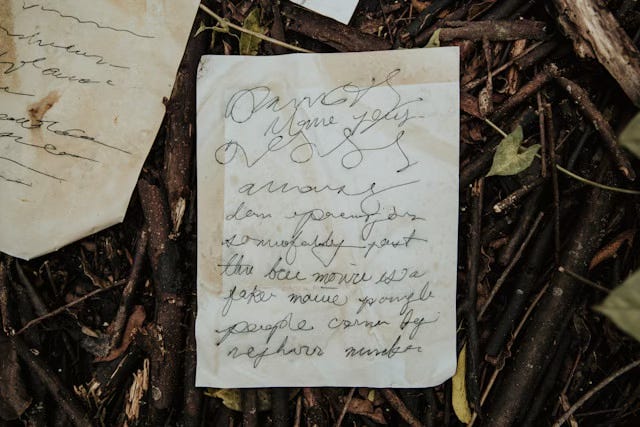
Sylvia Plath and Hypergraphia
I’ve already covered the experiences of hypographia and dysgraphia in the above-linked articles related to Sylvia Plath and her characters. In both of the fiction books that are based on her truths, we see that as she becomes increasingly depressed, her handwriting alters, becomes illegible, and ultimately she can’t write at all. These references are what got me diving down this rabbit hole in the first place.
But what about Plath and hypergraphia?
Plath was formally diagnosed with depression but there have been many posthumous suggestions that likely she experienced bipolar. Of course, posthumous diagnosis (or an diagnosis for that matter) must be taken with a grain of salt. Another reading of her work and life suggests instead that she had recurring major depression “in the setting of a borderline personality disorder.” Borderline and bipolar conditions have some overlap and some differences, so it’s not surprising that this arises in discussion of her work. I, personally, understand depression as part of a spectrum, and though I don’t know where she falls in regards to the bipolar side of the spectrum, there’s documented evidence of periods of high productivity in writing that could be signs of hypomania or mania.
Alice Flaherty (whose book about hypergraphia I’ll get into in a minute) reports on how Plath’s creativity was directly linked to her menstrual cycle symptoms including bursts of compulsive writing. I haven’t read the book, yet, myself, so I’m going to put a pin in that, but mention it because we may not have a specific clear diagnosis for Plath’s experience, but we do have documentation of the high highs and low lows of her creativity. In those highs, she wrote prolifically, and it is possible she experienced hypergraphia … not just writing a lot but feeling absolute compulsion to do so.
Is this just part of the creative process? Or is it a symptom of mental health challenges that one might see as a positive symptom when it allows for output of amazing creativity?
Hypergraphia as a Mental Health Symptom in Bipolar
The main distinction that makes an issue diagnosable in psychology is that it causes severe impairment to the person’s life - their health, finances, relationships, etc. Even when diagnosed bipolar and in a florid manic state, hypergraphia might not be a problem for any given creative. It’s when it begins to negatively impact quality of life that it’s perhaps problematic. In any case, hypergraphia can and does show up as a symptom of hypomania and mania for some people.
As with anything, there can be positives and negatives that the artist/writer experiences as a result. What interests me personally is the way that conditions and their symptoms impact artistic content, process, and productivity including both the potential benefits and drawbacks. Ultimately, I don’t think that there’s some perfect way to be; we each live with the conditions that we live with and by understanding the potential “good” and “bad” impact of things we can better make choices for our lives and our creative work.
“During these times, I can write and write and write. I’m not saying these are high-quality pieces, although some of my favorite pieces were written in a hypomanic or manic state. Mostly, this is quantity rather than quality. At a manic level, I can’t even really write eloquent pieces… it’s just like a tangle of different ideas going all in different directions, ones which appear all magically linked to me at the time, but do not make sense to anyone else.” - Anja Burcak, The Mighty
Potential benefits of hypergraphia for artists with bipolar disorder:
Increased creative output and productivity
Heightened inspiration and ideas for artistic endeavors
Enhanced expression of emotions and experiences
Intense focus and drive to create
Potential for exploring new artistic styles or genres
Opportunity for self-discovery and introspection through the creative process
Potential for creating a substantial body of work and building a strong artistic portfolio
Increased chances of artistic recognition and success due to prolific output
Potential drawbacks of hypergraphia for artists with bipolar disorder:
Difficulty managing and organizing the overwhelming amount of creative output
Potential for erratic or impulsive decision-making in artistic pursuits
Struggles with maintaining consistent quality in the work produced
Impaired judgment regarding artistic choices and self-editing
Possible strain on physical and mental well-being due to the manic episode's intensity
Challenges in maintaining focus and completing projects due to scattered attention and multiple ongoing ideas
Potential for neglecting other aspects of life, such as self-care or relationships, in pursuit of creative endeavors
Difficulty in filtering and selecting the most meaningful or relevant ideas for further development
Potential for burnout or exhaustion due to an excessive and relentless creative drive
Alice Flaherty, The Midnight Disease and Hypergraphia
I’m looking forward to getting my hands on a copy of the aforementioned book by Alice Flaherty, which seems to be the best resource available on the topic of hypergraphia. Chantal Martineau (linked at the top of this article) shares of Flaherty:
“Her own experience with hypergraphia began when severe postnatal depression took over after she gave birth to premature twin boys who died. Paralysing grief spawned in her an uncontrollable obsession with writing. A year later, in a twist of fate, she gave birth to healthy twin girls. This second, happy pregnancy also resulted in a bout of hypergraphia. Her musings developed into a book she says she could not stop herself from writing: The Midnight Disease.”
Hypographia as a Mental Health Symptom in Depression
Apparently The Midnight Disease also looks at writer’s block as the flip side of the coin, so I’ll be curious to see what I can learn when I do read the book.
Something I loved:
In any kind of depression, including bipolar depressive periods, writing and creativity can be impacted by the symptoms of the condition. I’ve experienced this myself when fatigue, feelings of pointlessness and worthlessness, self-esteem, etc. have reduced my will and ability to write or create. I have never experienced quite the degree described in the fictional Plath books to where I physically couldn’t write at all … but I’ve definitely had extreme writer’s block and avoidance of creativity due to my symptoms.
One of the key symptoms of depression is a loss of interest in the things that once interested you. As a writer, I have experienced this in regards to writing and reading. Other specific symptoms of depression that can potentially lead to hypographia:
Fatigue which depletes motivation and inspiration to create. It may also actually physically hinder writing.
Self-doubt, low self-esteem, feelings of worthlessness, hard inner critic … all of these depression symptoms can obviously lead to writer’s block.
Difficulty concentrating or focusing makes it challenging to write coherently if at all. Brain fog makes you feel like you’re struggling just to find the next word.
Numbness is a hallmark of depression. It’s hard to tap into vulnerable and intense emotions when you’re numb which can make it hard to write authentically and deeply.
“In a depressed state, individuals tend to ruminate more and talk with less certainty and less confidence. This is consistent with our findings of shorter average sentences and words as well as less published works as a whole due to lack of creative output. Due to the feelings of uncertainty, in this mental state, sentences had increased punctuation and relied more on emotional and descriptive words rather than figurative language. There was greater meta narrative seen because writers were more narrowly focused thematically.” - An analysis comparing authors Coleridge, Woolf, Wordsworth and Radclyffe Hall with regard to bipolar impact on writing
Dysgraphia / Handwriting Changes in Mental Health Conditions
And then there’s the intriguing aspect of how physical handwriting changes manifest for people experiencing the symptoms of bipolar episodes and other mental health conditions. I’ll continue learning about this but my early research has found:
One study revealed “there was an increase in the size of the writing, pen pressure, the length of words, the spaces between words, and missing and incorrect punctuation marks in the manic episode.” This study suggested that handwriting can thus be potentially used as a diagnostic tool.
A comprehensive review of the influence of neurodegenerative diseases on handwriting found many different impacts of varied conditions on the physical nature of writing including: “Between the tremendous and awful moods, the duration of on-paper strokes became shorter, respectively. In addition, strokes made with subjects in a bad mood had less tension than those made with subjects in neutral or good moods.”
Interesting research: “A unique presentation of major depressive disorder manifesting as chief complain of handwriting change was observed in a girl who had nice handwriting before depression. In spite of constant efforts she was not able to revert back to her original handwriting. Her new handwritings were different from old one in form of width and height of letters, organization and overall presentation. She was prescribed antidepressants. Depressive symptoms were relieved and her handwriting started gradually improving considerably though previous level had not been achieved.”
There’s a lot to explore in future essays, but I’ll leave off here with curiosity about your own experiences as to how mental health symptoms (including stress or burnout or whatever, because we are all artists with mental health) have affected your handwriting and writing productivity.
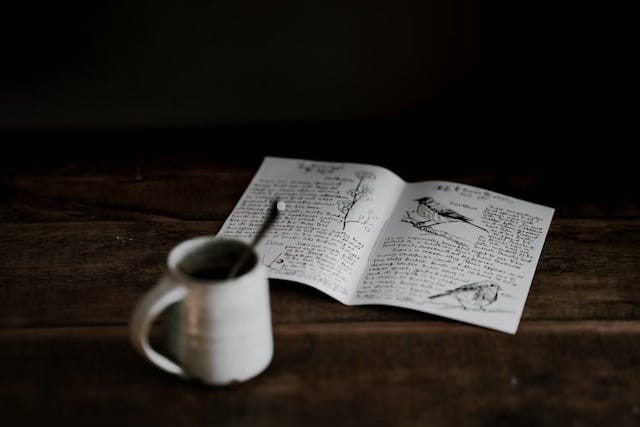
Art and Mental Health Takeaways:
The depressive and manic periods of bipolar can impact both the physical nature of handwriting and the ability to write. As a result, some professionals use handwriting observations as one diagnostic tool.
There are “positives” and “negatives” to hypergraphia as it relates to bipolar. The point isn’t to judge ourselves or others but rather to use the information to create the lives we want given our own unique symptoms and the way they impact us.
Interestingly, the compulsion to write has a medical term (hypergraphia) but the term for its opposite is unclear.
There’s so much we don’t know, yet, about the relationship of psychology to neurology and both of these to creativity!
I have never specifically experienced hypergraphia but that I have certainly experienced writer’s block in direct relation to depression symptoms. Perhaps the most poignant example of this was a time when I had finished writing one of my books and I was doing A LOT of online writing to pay the bills and I completely burned out. I would sit at the computer and be completely unable to put words down. That turned into full numbing out, mostly with all day binge tv and lots of sleep, during which time I didn’t write and hated myself for not writing.
And during insomnia I developed this huge fear: what if I was out of words forever? I wondered if perhaps at birth we are allotted a certain number of words to speak and to write and what if I had used all mine up? What if I quite literally would never write again, let alone be able to authentically articulate myself? This was an actual fear that I had. Luckily for me this didn’t manifest too far into the anxiety side of things, didn’t become an obsession or phobia. I treated my depression and I emerged on the other side. But I remember that feeling every time that depression threatens my desire to write.
And yes, that still happens often. And I keep playing around with how to experience that. On the one hand, I believe in the power of rituals in writing. I believe that sitting down at the page every single day at the same time will ultimately result in a lot of written work, some of which has quality, all of which has purpose. However, I also know that I have ebbs and flows of mental energy and sometimes I’m going to avoid the page and it’s a heck of a lot worse of a cycle if I beat myself up for that so I try to be really gentle with those times, but not so gentle that I don’t make myself come back to the page when it’s time. It’s a balancing act I’m constantly fiddling with.
What helps most is continuing other forms of creativity when I don’t feel like I can write. I love to cut up magazines and make collages that are mostly image with a lot of text. This helps somehow get things flowing again and feels creatively useful in some way even when it doesn’t specifically seem to lead to other writing.
As to the other things I’ve written about here … I am curious about people’s experience of hypergraphia and will be studying it further in the months to come. I am curious about my own experience of how handwriting changes related to my mood … I know that my handwriting changes a lot from day to day and I have decades of journals to mine so this will be an ongoing project that I’me excited to start.
Art and Journal Prompts:
I offer you some creativity prompts that you can use for journaling, creative writing, as a start to an art project, or however you may see fit. It would definitely be fitting for this particular article to respond in longhand writing:
Describe a time when you experienced a surge of creativity or inspiration.
Conversely, write about a time when you overcame writer's block or a creative slump.
How does your mood influence the themes, colors, or tones in your work? Write or create something that reflects a specific emotional state.
What have been the highest highs and lowest lows in your own creative life?
The next time that you experience a creative burst, write a letter to yourself describing the experience.
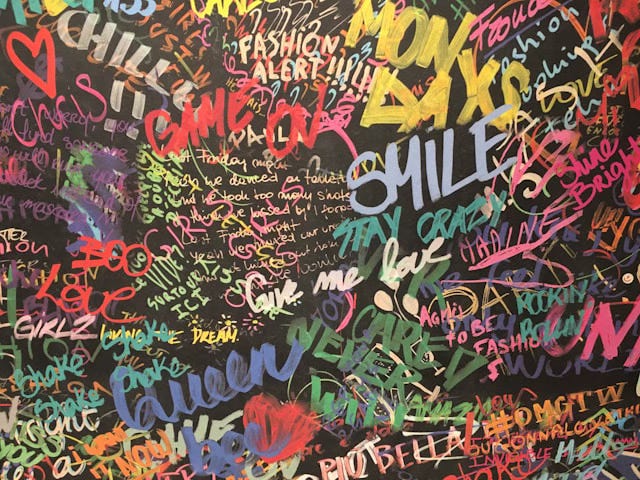
Related Tips for Using Creativity to Improve Wellness:
In addition to the above prompts, you might want to try some of these creative activities to help improve mental health:
Add a mood tracker to your journal. It could be as simple as a smiley face / frowny face in the top corner as you begin to write and the bottom corner as you finish writing. Over time, notice the relationship between handwriting and mood.
Experiment with different artistic mediums or writing styles that you haven't explored before. How does this change your mood or reflect your mood?
Create a visual timeline or write a story/poem noting all of the highs and lows of your creative process.
Write or create something that represents finding harmony and balance between your artistic drive and the need for overall well-being.
Related Tips for Coping with Mental Health Symptoms That Impact Creativity:
Do you have symptoms that are impacting your ability to create? Here are some additional wellness tips:
Try establishing a routine that incorporates dedicated time for creativity, for rest, for other activities. Having a consistent schedule can help provide a sense of stability and balance through the emotional ups and downs even though it can be hard to stick to it. It helps you sit down at the page even when you feel too depressed to write … and it helps create time boundaries around intense times like bouts of hypergraphia when they threaten to become self-harming.
Incorporate mindfulness techniques into your routine to help manage stress, increase self-awareness, and cultivate focus. Grounding techniques are also helpful. Come into your body.
Allow yourself to embrace imperfection and detach from the need for perfection in your creative work. Overall, practice being gentle with yourself.
Affirmations, Quotes, Meditations, Etc.:
Reading or writing affirmations / mantras can be very powerful. In relation to this article, play around with writing them down (I usually do ten times each for the one I’m working with) and then with simply thinking them or reciting them out loud and see what feels best for you:
I trust my creative process unconditionally.
My words/art have transformative power.
Writing/art is my healing sanctuary.
My creativity sparks inspiration in others.
I release self-doubt and embrace creative freedom.
Additional Resources:
Graphology: the use of handwriting to diagnose disease.
Hypergraphia and Other Failed Attempts at Paradise, a poetry collection
If you read this far, perhaps you liked the work. The work does take work. It only continues with support, so please consider subscribing. My annual rate starts at $10 per year.




